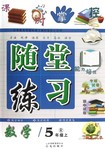
 优百分课时互动系列答案
优百分课时互动系列答案 开心蛙状元作业系列答案
开心蛙状元作业系列答案 课时掌控随堂练习系列答案
课时掌控随堂练习系列答案科目:高中英语 来源: 题型:阅读理解
阅读下列短文,根据以下提示:1)汉语提示,2)首字母提示,3)语境提示,在每个空格内填入一个适当的英语单词,并将该词完整地写在右边相对应的横线上。所填单词要求意义准确,拼写正确。
Dear Editor,
I’m a student of Senior Three in a middle school in Fujian Province.
In order that we can m________ the best use of learning materials, the ________
students’ Union of our school is ________(安排) an activity.We students ________
of Senior Three are called on to give away our ________(用过的) books, ________
newspapers or magazines to the students in the _______(低) grades.The ________
idea, ________ is intended to promote friendship and encourage economy, ________
is h________ praised and supported by the teachers and students alike.The_______
activity will last about ten __________, from June 10 to 20.I believe more_______
and more students of Senior Three will ________(响应) the call.As a student, _______
I am strongly f________ the activity because it is very meaningful and ______
helpful.I hope this kind of activity will continue in the f________. ______
Yours,
Lin Hua
查看答案和解析>>
科目:高中英语 来源:2011-2012学年江苏省学大教育专修学校高三5月月考英语试卷(带解析) 题型:阅读理解
请认真阅读下列短文,并根据所读内容在文章后表格中的空格里填入一个最恰当的单
词。注意:每个空格只填1个单词。请将答案写在答题卡上相应题号的横线上。
Have you heard or read stories about people who are sick and have been healed by listening to music? Is it a miracle or a successful form of medicine? Can listening to music relieve pain?
Around the world,music therapy(疗法) is being used to treat different medical conditions and illnesses. Some of the ways people use music therapy are to reduce pain,such as in childbirth or during cancer treatments,or to stimulate brain activity after an injury or money loss. Music therapy has also been successful in aiding children to overcome disabilities. Children can move their bodies with the music and stamp along to the beat.
Why is music a useful therapy? Music is soothing and relaxing.but it also stimulates our brains. Emotionally and physically, we respond to the sounds of music. But the complexity of music(the different tempos,rhythms,melodies and harmonies) provokes(激发)the biggest response. Thus,classical music is most typically used for therapies due to complex sounds and patterns. Although rap or hip hop might be fun to listen to,it’s unlikely that such styles of music would produce the same kind of therapeutic effect Playing a musical instrument rather than simply listening to music can also be therapeutic for some people,helping relieve stress and anxiety
Have scientists been able to prove that music can heal disease? Music has been shown to reduce pain in cancer patients by increasing the release endorphins(内啡肽). Endorphins are the body’s natural painkillers,and when we listen to music,our brains respond by releasing these natural painkillers. It has also been known to contribute to the brain development of the babies who have just been born and even babies still in the mother’s womb. Certain types of music have also been found to lower blood pressure and slow a person’s heart rate. Many people are hopeful that music could replace the need for some medications(药物)that are normally used to treat certain illnesses. At present,music therapy is used in a variety of settings such as hospitals,rehabilitation centers,nursing homes,day cares,and schools.
Although music therapy is not yet considered a mainstream treatment,it is recognized more and more as a useful addition to traditional treatment. So next time you are feeling low or stressed out,put on some relaxing music and let the music heal you.
| Title : Music That (1)__________ | ||
| The (2) _______ of music therapy | to treat different medical conditions and illnesses | to reduce pain |
| to (5) _______ brain activity | ||
| to overcome(6) ________ . | ||
| How does music therapy (3) ___? | Music is soothing and relaxing; it stimulates our brains; classical music is a(7) _____due to its complex sounds and patterns. Playing a musical instrument is also useful in (8) ______ stress and anxiety. | |
| Scientific proofs | Music has been shown to reduce pain in cancer patients by increasing the release of endorphins. It has also been known to contribute to the brain development of the (9) ____ babies. Certain types of music have also been found to lower blood pressure and slow a person’s heart rate. | |
| (4) ______ | Music therapy is recognized as a useful (10) ___to traditional treatment. | |
查看答案和解析>>
科目:高中英语 来源:2011-2012学年福建省福清东张中学高二下学期期末考试英语试卷(带解析) 题型:填空题
阅读下列短文,根据以下提示:1) 汉语提示,2)首字母提示,3)语境提示,在每个空格内填入适当的英语单词,并将答案填写在答题卡上标号为76-85的相应位置。.所填单词要求意义准确,拼写正确。
Like most of my schoolmates, I have neither brothers nor sisters---in other 76 , I am an only child. My parents love me dearly of course and will do all they 77 to make sure that I get a good 78 (教育). They do not want me to do any work at home; they want me to d 79 all my time to my studies so that I’ll get good marks in all my 80 (科目). We may be one family and live 81 the same roof, but we do not seem to get much time to talk 82 (一起). It looks as if my parents t 83 me as a visitor or a guest. Do they really u 84 their own daughter?
What things are in other families, I w85 .
查看答案和解析>>
科目:高中英语 来源:2012-2013学年福建省高二上学期第一学段考试英语试卷(解析版) 题型:单词拼写
阅读下列短文,根据以下提示:
(1)汉语提示
(2)首字母提示
(3)语境提示,在每个空格内填入一个适当的英语单词,并将该词完整地写在右边相对应的横线上。所填单词要求意义准确,拼写正确。
People are often worried about going to other countries due to the
“language problems”. But as a matter of ,you can still have a1.
great time living a without many language skills. 2.
Here are some tips.
To begin with, take the time to learn a few basic (表达) 3.
and how to c from one to ten. Secondly,open your mouth and 4.
say “ahh” Before (问)the way, 5.
as if you were at the doctor's.
Follow “ahh” by the name of the place you're going to, l____ 6.
“ahh Paris”. Lastly, speak simply. Say “Menu, please.”rather ____7.
I would like a menu please.” If your vocabulary is____(有限), 8.
try to communicate by writing. Carry ____ and a pen,and get waiters 9.
or clerks to write down prices for you. Most importantly,
give y____ a chance to use body language. 10.
查看答案和解析>>
科目:高中英语 来源:江苏省建湖县0910学年高二下学期期末考试(英语) 题型:其他题
任务型阅读 (共10小题;每小题l分, 满分l0分)
请认真阅读下列短文, 并根据所读内容在文章后表格中的空格里填入一个最恰当的单词。注意: 每个空格只填1个单词。请将答案写在答题纸上相应题号的横线上。
You might think body language is universal. After all, we're the same species, right? But basics like what is considered a polite greeting and definitions of "personal space" vary widely from culture to culture. Americans, for instance, are considered rather reserved in the way they greet friends, and they define personal space more broadly than most other cultures. Knowing how another culture's basic body language differs from yours may be of use next time you travel internationally.
Mind how you meet and greet. Americans and Canadians, male and female, tend to greet each other with a nice firm handshake. In Asian countries, the polite form of greeting is to bow, and the lower you bow, the deeper respect you have for the person you are bowing to. In Spain, Portugal, Italy and Eastern Europe, men kiss each other on the cheek.
Be careful about eye contact. In America, intermittent(断断续续的) eye contact is preferable in a conversation--unless it's someone you care deeply for. In Middle Eastern countries, intense prolonged(持久的) eye contact is the norm, and the person you're speaking with will move very close to you to maintain it. The Japanese, on the other hand, consider it an invasion of privacy, and rarely look another person in the eye.
Americans, in general, smile when they meet or greet someone. Koreans, however, think it's rude for adults to smile in public--to them, smiling in public is a sign of embarrassment.
Don't point. Most Americans think nothing of pointing at an object or another person. Native Americans consider it extremely rude to point with a finger, and instead they point with their chin. It's also rude to point with a finger in China; the polite alternative is to use the whole hand, palm facing up.
Give the right amount of space. In Asian cultures, particularly China, the concept of personal space (generally defined in America as a three-to-four-foot circle for casual and business acquaintances) is nearly nonexistent. Strangers regularly touch bodies when standing in line for, say, movie tickets. People in Scandinavian countries, on the other hand, need more personal space than we do.
Title: How to (71)_______ Body Language in Different Cultures
|
Items |
In America |
In some Asian countries |
|
Meeting and greeting |
Both male and female have a (72)_______ to greet each other with a nice firm handshake. |
It’s polite for people to bow when they meet and greet. |
|
Eye contact |
People (73)_______ to make an intermittent eye contact in a conversation. |
Considering intense prolonged eye contact unacceptable, Japanese won’t look another person in the eye. |
|
Smiling |
It’s normal for Americans to smile when they meet and greet. |
In Korean, people seldom smile in public because it represents (74)_______. |
|
Pointing |
Most Americans often point at an object or another person (76)_______ native Americans. |
Chinese always try to (75)_______ pointing with a finger because it’s a rude manner. |
|
Personal space |
Americans (77)_______ to keep a three-to-four-foot distance when they are with casual and business acquaintances. |
It’s almost (78)_______ in China. |
|
(79)_______ |
People behave great differently in different culture and knowing the differences of body language may be (80)_______ when you travel abroad. |
查看答案和解析>>
湖北省互联网违法和不良信息举报平台 | 网上有害信息举报专区 | 电信诈骗举报专区 | 涉历史虚无主义有害信息举报专区 | 涉企侵权举报专区
违法和不良信息举报电话:027-86699610 举报邮箱:58377363@163.com